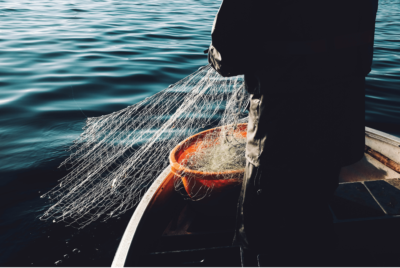Written by Nereus Research Fellow Jessica Spijkers,
Human activities are having unprecedented impacts on wild fisheries. Overfishing and mismanagement have pushed commercial fisheries to capacity at a global scale, with attempts at sustainable fisheries management often undermined by widespread illegal, unreported, and unregulated (or IUU) fishing. Moreover, climate change is causing a redistribution of fishery resources (from the tropics to high latitudinal regions), as well as changing their potential productivity and yields. Researchers and policy makers have been parsing out the possible impacts on food and income security, which are expected to be particularly dire for small island countries highly dependent on marine ecosystems. The repercussions of such changes on regional and international security, however, remain ill understood: will there be more conflict between countries over fishery resources as marine ecosystems are affected? To understand if international fisheries conflict is becoming an increased security threat, more knowledge on the diversity, geography and frequency of such conflict over time is needed.
To explore those questions, we conducted a first longitudinal analysis using a large comparative dataset to scan for global patterns and trends in international fisheries conflict. The dataset is comprised of 531 conflict events (which have a range of intensity from military acts causing death, to verbal hostility between states) starting in 1974 and ending in 2016.
By applying a mixed set of methodologies (descriptive statistics, ordination and cluster techniques) we found that the frequency of conflict has increased since 1974, although there was a period of lower reported conflict between approximately 1998–2007. Many of the countries most frequently involved in conflict are large industrial fishing powers known to dominate global fishing efforts – the USA was involved in most conflict over time, followed by Canada, Japan, China and the EU. Conflict events involving North American and European countries (often related to single species, mostly characterized by low conflict intensity and sometimes territorial disputes), were relatively common particularly before the turn of the century; while more recently conflict occurred mostly between Asian countries and more often involved violence, related to IUU and territorial disputes.
Building on this knowledge of increased conflict frequency and their geography, the important next step in the face of accelerating climate change impact, resource scarcity and illegal activity is to understand what is driving those conflicts. Once we parse out which environmental, political or economic variables are at the core of those erupting problems, better non-escalatory risk mitigation strategies for conflict prevention can be designed and implemented.
Reference
Spijkers, J., Singh, G., Blasiak, R., Österblom, H., Morrison, H., Billon, P. Le, 2019. Global patterns of fisheries conflict: Forty years of data. Glob. Environ. Chang. 57. doi:10.1016/j.gloenvcha.2019.05.005







